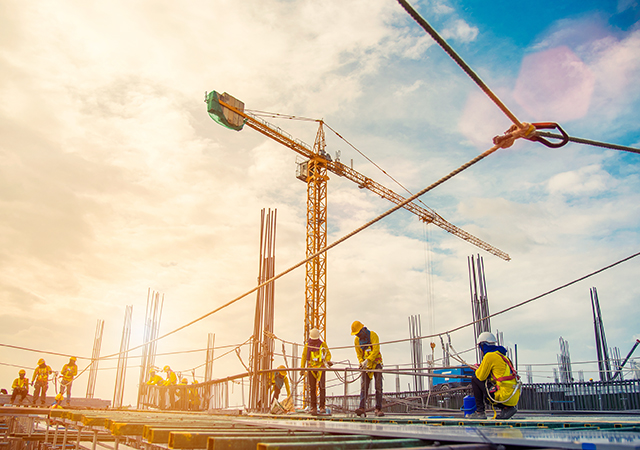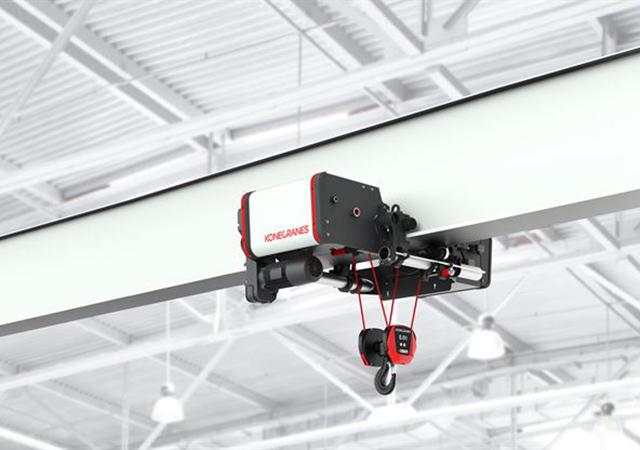

Fixed Cranes Market was valued at $7.7 billion in 2023 and is estimated to register a compound annual growth rate (CAGR) of over 6 per cent between 2024 and 2032, owing to the increasing integration of digital technologies, including remote monitoring, predictive maintenance, and automation, according to a report by Global Market Insights.
This growth enhances operational efficiency, improves safety, and reduces downtime, aligning with the industry's push for greater productivity and sustainability.
The crane boasts distinctive features such as specialised technical support from the tower crane research institute, robust design capabilities utilising ADAMS software for motion analysis, and structural design enhancements through finite element analysis.
The mining and extraction industries play a pivotal role in boosting crane utilisation in the fixed cranes market. As these sectors continue to expand globally, there is a growing demand for heavy lifting solutions to facilitate the extraction, transportation, and processing of raw materials such as ores, minerals, and aggregates.
Fixed cranes are essential for tasks such as loading and unloading heavy equipment, transferring materials within mining sites, and assembling infrastructure for extraction operations.
This sustained demand from mining and extraction industries serves as a significant catalyst for the continued growth and profitability.
The substantial initial investment required for fixed cranes can pose a significant barrier for potential buyers.
The upfront costs associated with purchasing, installing, and commissioning a fixed crane can be considerable, especially for small and medium-sized enterprises with limited capital resources.
Additionally, the need for site preparation, foundation construction, and ancillary equipment further adds to the financial burden.
This high initial cost may deter some businesses from investing in fixed cranes, potentially resulting in lost opportunities for crane manufacturers and suppliers operating in the market.
FIXED CRANES MARKET TRENDS
An emerging development in the fixed crane industry is the increasing adoption of eco-friendly practices. Crane manufacturers and operators are integrating sustainable materials, energy-efficient technologies, and emission-reduction measures into their products and operations, reported stated.
The move toward environmental responsibility is in line with worldwide efforts to decrease carbon footprints and alleviate the effects of industrial operations on the environment, thereby fostering the adoption of eco-friendly practices in the fixed crane sector.
Additionally, it offers the convenience of hydraulically folding the 30-meter jib to 24 meters for simplified transportation.
Designed for building projects of up to three stories tall, it adheres with the updated European safety standard EN 14439 for tower cranes.
This innovative model represents a shift toward electric-powered cranes, emphasising sustainability and reduced environmental impacts. With features such as a 4-ton lifting capacity and adherence to updated safety standards, the Evy series caters to the evolving needs of construction projects while embracing technological advancements and regulatory requirements.
An additional notable development in the fixed cranes market is the increasing emphasis on safety enhancements. Crane manufacturers are integrating advanced safety features such as collision avoidance systems, load monitoring sensors, and automated shutdown mechanisms into their products.
Moreover, there is a growing demand for comprehensive training programs and certification requirements for crane operators to ensure safe & efficient operation. This heightened focus on safety reflects the industry's commitment to reducing accidents, minimising downtime, and safeguarding both personnel & assets, thereby driving the adoption of advanced safety measures.
FIXED CRANES MARKET ANALYSIS
Based on product, the tower crane segment is projected to exceed $4 billion by 2032. The increasing demand for high-rise construction projects worldwide acts as a significant catalyst for the tower crane segment. Tower cranes are indispensable for lifting heavy materials and equipment to great heights, supporting the vertical expansion of urban landscapes and infrastructure development initiatives. Tower cranes play a crucial role in the construction of wind turbines for such projects, facilitating the installation of turbine components offshore. Therefore, the growth in offshore renewable energy projects directly contributes to the demand for tower cranes, revealed the report.
Based on load capacity, the m 26 ton to 50 ton segment held approximately 36 per cent share of the fixed cranes market in 2023. In the 26-ton to 50-ton segment is showcase noticeable trend toward the integration of lightweight materials and compact designs. Manufacturers are focusing on developing cranes with higher lifting capacities while maintaining a smaller footprint, improving mobility, and facilitating easier transportation & installation on job sites.
North America region dominated the 32 per cent share of the fixed cranes market in 2023. In North America, there is a discernible growth toward the adoption of advanced automation and digitisation in the market. Companies are increasingly leveraging technologies such as IoT and robotics to enhance crane efficiency, safety, and productivity. This shift toward automation streamlines operations, reduces manual intervention, and optimises workflows, reflecting the region's commitment to technological innovations in industrial sectors.
In the Asia Pacific region, there is a notable shift toward sustainable practices in the fixed cranes market. With growing environmental concerns and regulatory pressures, manufacturers and operators are focusing on developing and adopting eco-friendly crane solutions. This trend involves the integration of energy-efficient technologies, emission reduction measures, and sustainable materials in crane design and operation. The move toward sustainability aligns with the region's efforts to promote green initiatives and reduce carbon footprints in industrial activities.
In Europe, particularly in France, Germany, and the UK, there is a significant emphasis on crane safety and regulatory compliance. Manufacturers are investing in research and development to incorporate advanced safety features and adhere to stringent European safety standards. Additionally, there is a growing focus on enhancing crane operator training programs to ensure safe & efficient crane operations. This trend reflects the region's commitment to prioritising worker safety and minimising workplace accidents.
FIXED CRANES MARKET SHARE
Liebherr Group and Terex Corporation hold a significant market share of over 24 per cent in the fixed cranes industry. In the market, competition is fierce among leading manufacturers vying for market share. These companies continuously innovate to offer a diverse range of crane solutions tailored to meet the specific needs of various industries. Additionally, there is intense competition in providing comprehensive aftermarket services, including maintenance, spare parts, and technical support, to ensure customer satisfaction and loyalty.
Moreover, the market landscape is characterised by strategic alliances and partnerships between crane manufacturers and technology providers to integrate advanced features such as automation, IoT, and AI into crane systems. Such collaborations enable companies to stay ahead in the market by offering cutting-edge solutions that enhance crane performance, efficiency, and safety.

